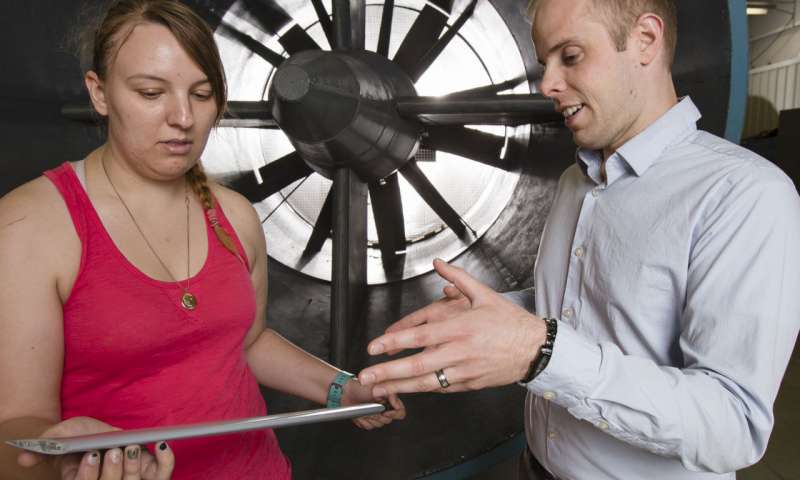Although hybrid-electric cars are becoming commonplace, similar technology applied to airplanes comes with significantly different challenges. University of Illinois aerospace engineers are addressing some of them toward the development of a more sustainable alternative to fossil fuels to power airplanes.
“Jet fuel and aviation gasoline are easy to store on an airplane. They are compact and lightweight when compared to the amount of energy they provide. Unfortunately, the actual combustion process is very inefficient. We’re harnessing only a small fraction of that energy but we currently don’t have electrical storage systems that can compete with that,” said Phillip Ansell, assistant professor in the Department of Aerospace Engineering in the College of Engineering at the University of Illinois.
Ansell said adding more batteries to fly farther may seem logical, but it works against the goal to make an aircraft as lightweight as possible. “That’s one of the big barriers we run into when designing battery-powered electrified aircraft. The current technology has very significant range disadvantages. But strong fuel-burn advantages.”

He, along with former aerospace undergraduate student, Tyler Dean, and current doctoral student Gabrielle Wroblewski, utilized a series of simulations to model the performance of hybrid-electric aircraft.
“We started with an existing twin-engine aircraft and looked at how we might create a hybrid-electric drivetrain for it using existing off-the-shelf hardware,” Ansell said. “We wanted to know how well it would perform. If I used a certain set of drivetrain components, I want to know how far the aircraft could fly, how much fuel does it burn, how fast can if climb—all of the overall flight performance changes.”
A flight-performance simulator was created to accurately represent the true flight performance of a Tecnam P2006T on a general mission to include take off, climb, cruise, descent, and landing, along with sufficient reserves to meet FAA regulations. Transition segments were incorporated into the simulation during climb and descent where the throttle setting, flap deployment, propeller rotation rate, and all other flight control variables were either set to mimic input from a typical pilot or prescribed in accordance with the aircraft flight manual.
After configuring the simulator to collect baseline performance data, a parallel hybrid drivetrain was integrated into the simulation. The researchers compared the sensitivity of range and fuel economy to the level of electrification, battery specific energy density, and electric motor power density. The same sensitivities were studied with a series hybrid-electric drivetrain.
Fonte: https://m.techxplore.com/news/2018-11-hybrid-electric-aircraft.html


